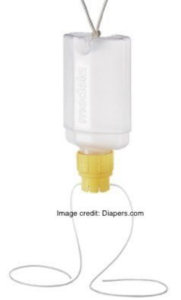‘Chestfeeding’; Before We Start
At The Gender Confirmation Center we know that gender is a spectrum and how folks physically identify with their body varies. Some transmasculine folks may not want to get any gender affirming surgeries, some may want to right now, or some might be waiting for the moment that feels right to them.
There is no right or wrong way to align into the person you know that you are. In order to define what you want out of your gender alignment, it’s important to know that facts prior so you can identify what decisions you’d like to make.
Maybe one of the decisions you’re weighing out is chestfeeding. Chestfeeding refers to transmasculine or non-binary transmasculine or gender expansive folks and the act of feeding a baby or child at the chest. There is some content out there regarding chest feeding and some of it is scientifically incorrect or misleading.
The contents within this webpage have been reviewed by board certified plastic surgeon Dr. Scott Mosser of the Gender Confirmation Center of San Francisco. This webpage’s intent is to inform you as well as manage expectations when approaching top surgery that can (or will) alter the function of your chest.
An Introduction To ‘Chestfeeding’
There are many other ways transmasculine folks may refer to this process. You may have heard of the terms ‘infant feeding’, ‘lactating’, ‘nursing’, or ‘breast feeding’. Throughout this content we’ll be using the term ‘chestfeeding’ but are in no way denoting that this is the ‘correct’ term to use as everyone’s experience and vocabulary varies. We encourage folks to find the words that make them feel safe and comfortable in relating to the topic at hand.
Simply Put: Can I ‘Chestfeed’?
Pre-op: If you are ‘pre-op’ (meaning you haven’t had top surgery) you will be able to ‘chestfeed’ (breastfeed).
Post breast-reduction: You might be able to chestfeed, but there is a good chance you will have to supplement with formula.
Post-op after a full Top Surgery (FTM/FTN mastectomy): Though there are definitely anecdotal cases of people who can chestfeed after some types of top surgery, you should definitely not count on this, and for sure it will not be possible after procedures other than aggressive breast reduction and possibly buttonhole / inverted T.
Below you’ll find some F.A.Q’s regarding chestfeeding.
Is It Possible to Chestfeed (Breastfeed) After Having Top Surgery?
The glands and ducts responsible for milk production will be removed from your body during surgery. This means that you will no longer be able to produce milk. There may be a small amount of glandular tissue left behind, but this will not be enough to produce milk.
Also, if you have free nipple grafting, which is common for medium-to-large chest sizes, your nipples will no longer be connected to any milk ducts, so the production of milk will be impossible for this reason. This is an important consideration to take into account if you are considering future pregnancy.
Though there are definitely anecdotal cases of people who can chestfeed after some types of top surgery, you should definitely not count on this, and for sure it will not be possible after procedures other than aggressive breast reduction and possibly buttonhole / inverted T.
Is It Possible to Chestfeed After Breast Reduction?
You might be able to chestfeed, but there is a good chance you will have to supplement with formula delivered to the baby via baby bottle or an ‘at-chest’ supplementer. The use of an at-chest supplementer is a wonderful way to feed your baby if you’re unable to produce all the milk the baby or child requires. It’s reflective of the ‘nursing relationship’ in the way that it doesn’t require the baby latching on to any artificial nipples, such as bottle nipples.
What’s an ‘at chest supplementer’?
It’s a feeding tube that is attached to a formula or breast milk filled bottle that allows for supplementary feeding at the breast. Below is a picture of one that can be hung from around the neck. A trusted and recommended brand by lactation experts and doctors is ‘Lact-aid’.
Can you take Testosterone while chestfeeding?
Testosterone can inhibit the hormones that affect chestfeeding. Please consult an endocrinologist to discuss this decision in detail as there are a variety of factors that could affect you and the baby. In short, it is best to minimize all medications, including hormones, while pregnant and chestfeeding.
I haven’t had top surgery yet, can I bind during the off times I’m not chestfeeding?
Binding during the immediate postpartum period will increase the risk of blocked ducts and mastitis (painful inflammation of chest tissue) and may damage your milk supply. However, some folks have had success with occasional, careful binding once the milk supply is well established and regulated. If you are wanting to practice binding during the lactation period you should consult a lactation expert, and should monitor the health of your chest closely.
What’s ‘donor milk’?
Everyone is aware of the high nutritional value of breastmilk. For folks who are unable to produce their own breastmilk there are options, such as donor milk. So what is donor milk? Well, simply put it’s another assigned female at birth person who has the ability to produce a normal amount of milk supply and donates it to a milk bank.
Where can I get donor milk?
There are different companies and locations, the most comprehensive list can be found on this website: https://www.hmbana.org/locations. Please note that the website above is highly gendered and not trans inclusionary but does provide one with resources regarding donor milk.
What other online resources are there about chestfeeding?
- A transman’s blog focusing on chestfeeding: https://www.milkjunkies.net. This is a wonderful way to connect with other folks in the community who are chest feeding in.
- There’s also a Facebook group ; Birthing and Breastfeeding Transmen and Allies that is another way to connect with folks.





